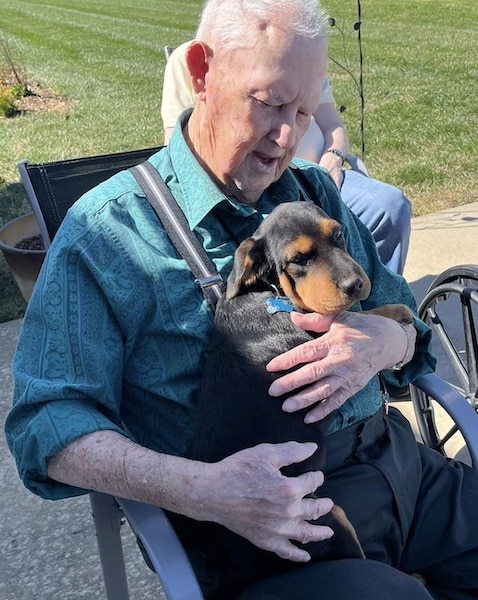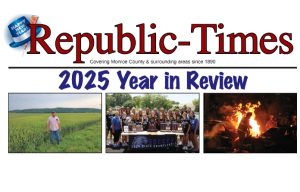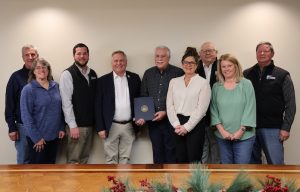Helping more than strays

With 20 years of service toward animals in the community, Helping Strays of Monroe County continues to strive toward connecting pets with their ideal families.
Helping Strays Executive Director Trisha Hoagland and Shelter Manager Nev Fisher spoke with the Republic-Times to discuss some of the current goings-on at the county’s no-kill shelter.
They particularly spoke about some of the changes being made to the adoption process, with Fisher explaining that the shelter’s adoption process is being brought more in-line with current industry standards and recommendations from the American Society for the Prevention of Cruelty to Animals.
These changes concern the shelter’s adoption criteria and how they assess whether or not a prospective family is a good match for one of the shelter’s animals.
“It’s not a more relaxed approach,” Fisher said. “We’re still extremely diligent about properly placing pets. We have implemented a match-making policy that is set through the ASPCA to help match the right pet to the right home, meaning high activity homes and lower activity homes, a couch potato versus somebody who does hikes every day.”
Fisher and Hoagland explained that adoption criteria that was previously very rigid is now much more flexible.
For example, families who already have pets and are looking to adopt from the shelter are no longer required to have their current pets spayed or neutered – Helping Strays animals are still required to be spayed or neutered.
Vaccine status for current pets will similarly be considered to be less of deal-breaker than it once was.
“We very much want to stay on best practices for industry standards,” Fisher said. “There is a more open adoption process in removing barriers because there’s been all kinds of research and data that shows that just because a pet isn’t spayed or neutered does not mean that this is going to be a good home or not. Or just because somebody doesn’t have a fence, it doesn’t mean they don’t hike three or four miles a day to exercise a pet properly.”
They further stressed that these changes do not mean the adoption process is more lax, as the shelter still takes great care in matching animals with the right family.
Along with keeping in-line with other shelters and ASPCA recommendations, these changes, they said, will also allow good homes that might previously have gone overlooked to now be seriously considered as adopters.
This is particularly important as the shelter is ever in need of families to adopt, with Hoagland remarking that Helping Strays is “bursting at the seams” with animals.
“We really do want our animals to get into a home rather than the shelter if possible,” Hoagland said.
Hoagland also spoke generally on the efforts being made by the shelter to help their animals.
“We’re progressing in the right direction, and we’re trying to be with the times with the way adoptions work,” Hoagland said. “I think the shelter does a really good job with understanding animal rescue right now and how it’s working.”
Hoagland and Fisher also spoke about some of the ways Helping Strays gets involved in the community.
Fisher pointed to the regular shot clinics that the shelter conducts in order to help keep pet vaccines more accessible and affordable for families.
Helping Strays has also strived to expose the community to its animals more, with one of these more recent programs being Seniors Supporting Strays.
This program involves folks from the shelter bringing animals out to senior living facilities in the community, giving them time to play with some of the residents.
“We bring some of our animals from the shelter, and they get to meet with the elderly, sit on their lap, give them kisses,” Hoagland said. “Our animals are getting attention, and then it’s nice for us to get to hear the residents reminiscing about their pets or their childhood.”
Hoagland also mentioned an animal training program. While the particular curriculum is still being planned, they said sessions are expected to begin in the next month or so, with pet-owners able to learn about properly walking their dog or other basics like following commands.
Hoagland and Fisher spoke generally about Helping Strays’ place in the community, voicing their appreciation for all the support received.
“We’re just constantly growing and coming up with new ways to serve this community but also get them involved in helping what we do here,” Fisher said. “We have a huge volunteer base.”
Fisher also remarked on the significance of Helping Strays being so locally-focused. She emphasized that Monroe County and animals in the community are the top priority.
They also spoke on some of the shelter’s needs. Along with donations and families looking to adopt, Helping Strays is also in need of additional foster homes, folks who can take care of shelter animals for a time before they are ultimately adopted.
Foster families are matched with pets in a similar way to adoptions, meaning that animals that require additional attention and exercise are paired with folks who are more active themselves.
“We are always looking for fosters, people who would open their homes to an animal while it’s waiting to be adopted,” Hoagland said. “Our facility can only hold so many, and we do get so many calls. We have a great foster base right now, but the more people we have who can foster, the more animals we can help.”
For more information on Helping Strays, visit helpingstrays.org or call 618-939-7389.






